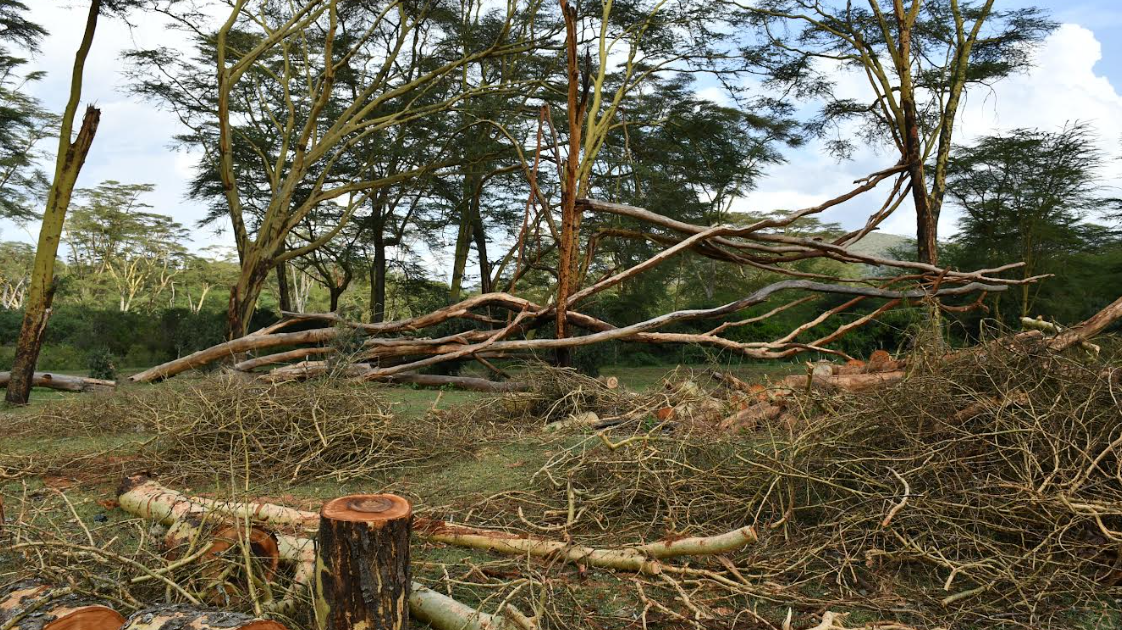Stakeholders around Lake Naivasha are calling for swift action to rehabilitate the lake’s riparian land.
They are specifically calling for the planting of papyrus, which they believe is essential for protecting the lake from pollution.
These efforts aim to prevent waste from Naivasha town and nearby informal settlements from entering the lake, interfering with the water body ecosystem and marine life sustainability.
Recently, fishermen conducted a clean-up of Lake Naivasha, recovering over 30 tonnes of tattered fishing nets and other plastic materials in a collaborative exercise between government and private stakeholders.
In addition, the Nakuru County government also led in some clean-up activities to unclog drainage systems around the informal settlements that exposed waste from slipping over to the lake during the recent rainy season.
However, this problem is compounded by the clearing of papyrus plants by local pastoralists who have grazed on the swath of plantation without any efforts to replenish it, exposing the water body to environmental pollution.
According to Francis Muthui, Chair, Friends of Lake Naivasha, the removal of these plants has worsened the lake’s pollution levels, as the natural buffer they provided has been diminished.
He said that with the rising population in the informal settlements located around the lake, more waste, including plastic bags and other pollutants, are being washed into the lake, occasioned by lack of provision of waste bins by local authorities.
Muthui stressed that the only sustainable solution is to replant papyrus, which can help prevent waste from entering the water and restore balance to the water resource ecosystem.
Grace Nyambura, Chairperson of the Lake Naivasha Oloiden Beach Boat Owners’ Association, raised additional concerns about sediment entering the lake from nearby quarries.
She noted that sand from the quarries around South Lake areas of the town had contributed to increased siltation, covering beaches and threatening fish breeding grounds.
Nyambura added that with recent rains experienced within the town environs, the problem has worsened, as tonnes of sand and other waste are washed away into the lake.
So far, the Nakuru County government has initiated efforts to open up drainage systems in surrounding estates while seeking partners to assist with the rehabilitation of the riparian land, including curbing the cutting of trees around the freshwater lake.
Lakeview MCA Alex Mbugua emphasized the urgency of the issue, pointing to the continuous flow of waste into the lake, especially during the rainy season.
He warned that the pollution threatens not only the lake’s ecosystem but also the health of fish consumers, drawing parallels to the situation at Lake Nakuru, where the government termed the lake fish as a health threat not fit for consumption.
Mbugua said the rehabilitation of riparian lands is a critical environmental conservation strategy, particularly around lakes and rivers, as tens of locals depend on it for their daily livelihoods.
Recently, hundreds of locals around the lake were displaced from their homes due to rising water levels as authorities warned that tens of residents were living on gazetted riparian lands.
According to conservationists, riparian zones, the interface between land and a water body, play an important role in maintaining the health of aquatic ecosystems.
In addition, these areas are termed as key naturally filter pollutants from surface runoff, stabilising shorelines, and providing habitat for dependent wildlife.
In Lake Naivasha, a crucial economic player for Nakuru County, papyrus plants have historically served as a natural filter, trapping sediments and pollutants before they enter the water body.
However, human activities such as deforestation, agriculture, and settlements have reduced the effectiveness of these natural barriers, which continues to expose the water resource to vulnerabilities.
The removal of the papyrus not only exposes the lake to pollution but also disrupts the ecological balance, affecting water quality and biodiversity, and this continued calls for rapid rehabilitation to restore the destroyed ecosystem.
For this, the papyrus plants, which need to be replenished around the lake, are particularly effective in filtering pollutants, stabilising shorelines, and creating habitats for fish and other aquatic life.
In addition, these efforts often involve partnerships between local communities, governments, and environmental organisations to ensure long-term success.
These concerns compound the rapid and urgent actions to mitigate the damage caused by pollution and ensure the preservation of the lake’s natural resources to better the marine life and to ensure sustainable livelihoods for hundreds for the fisheries community.
By Erastus Gichohi




